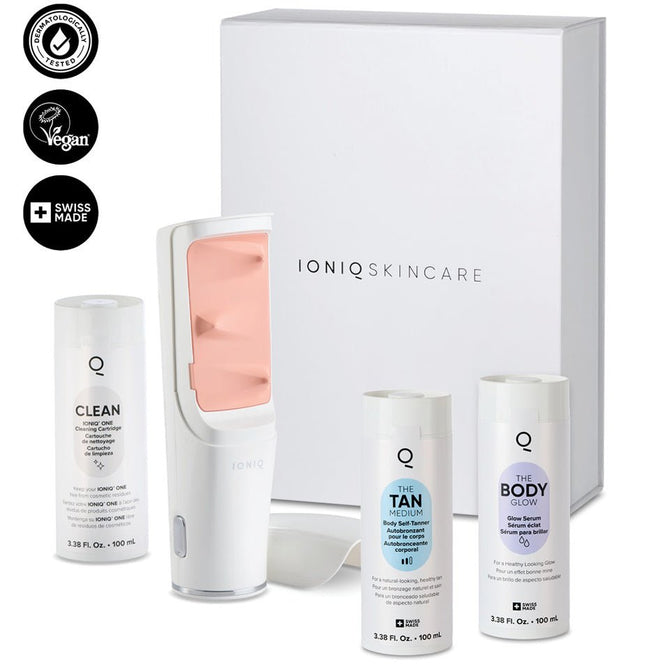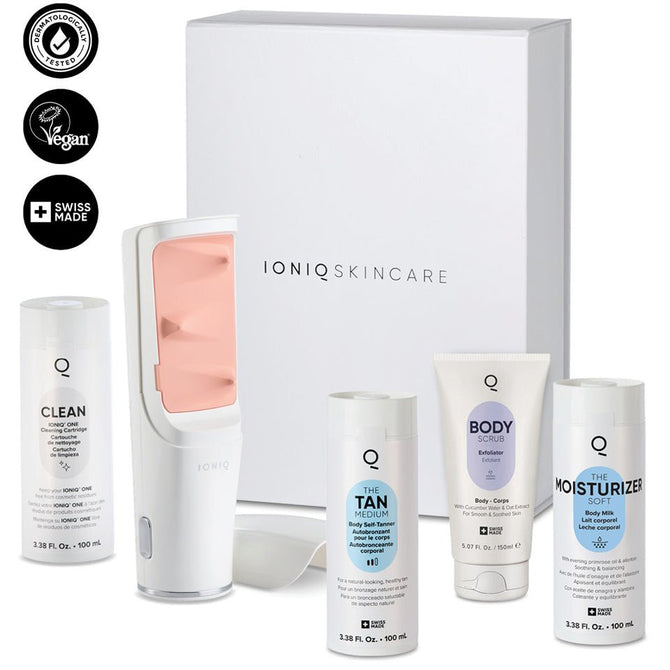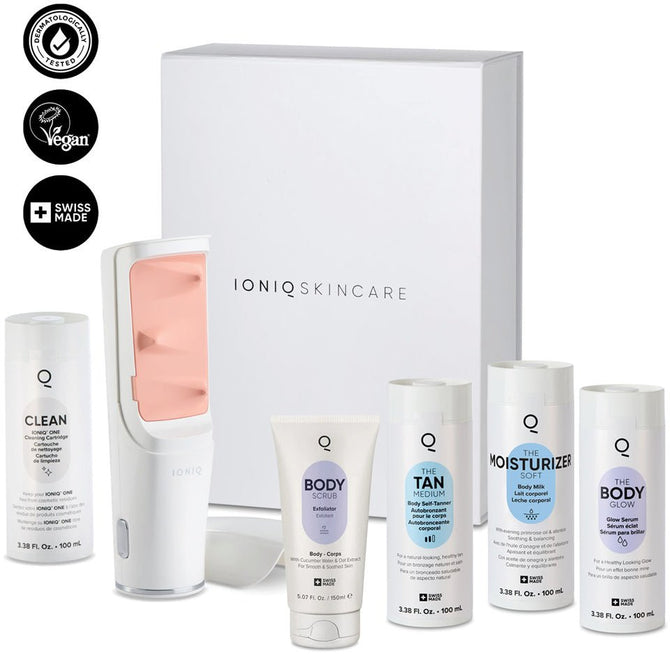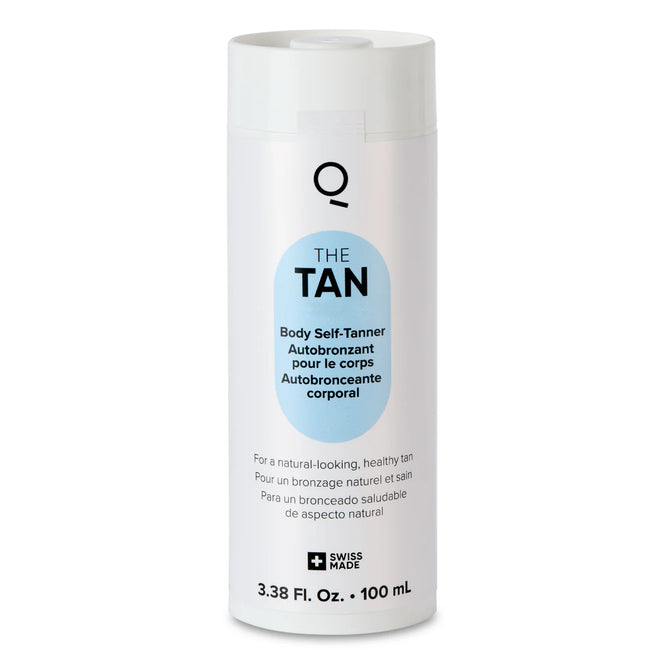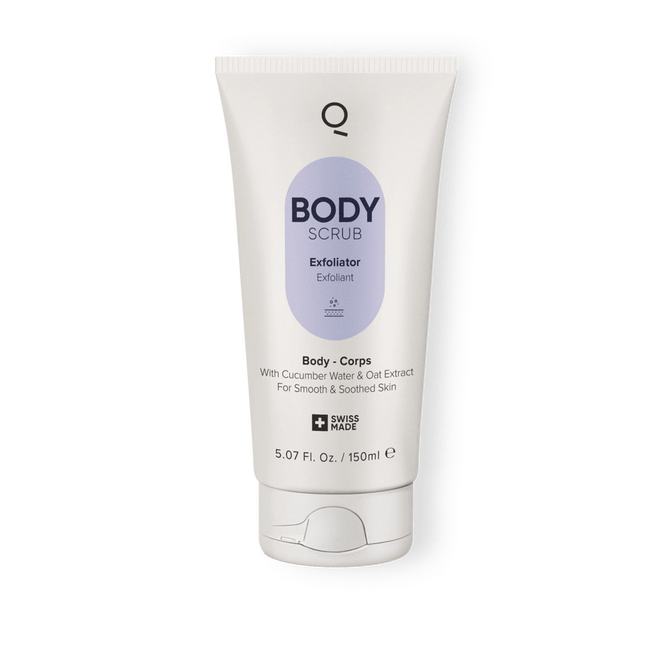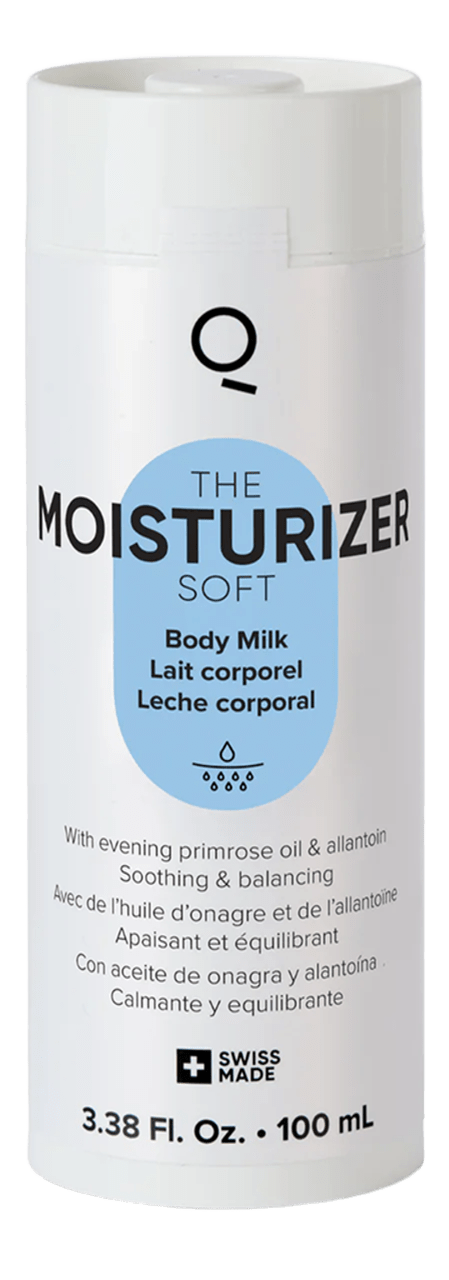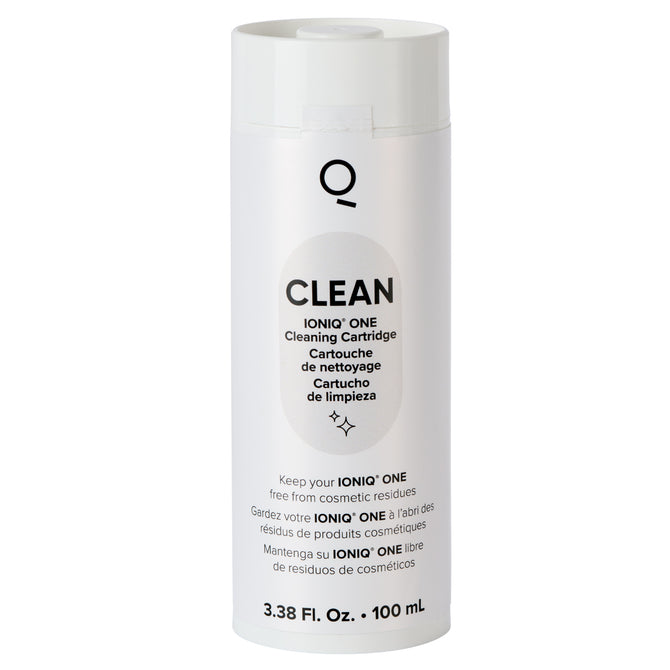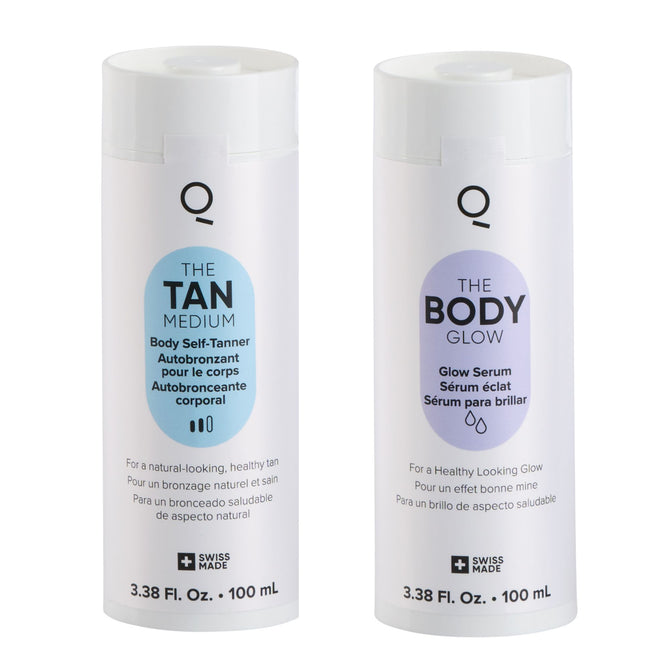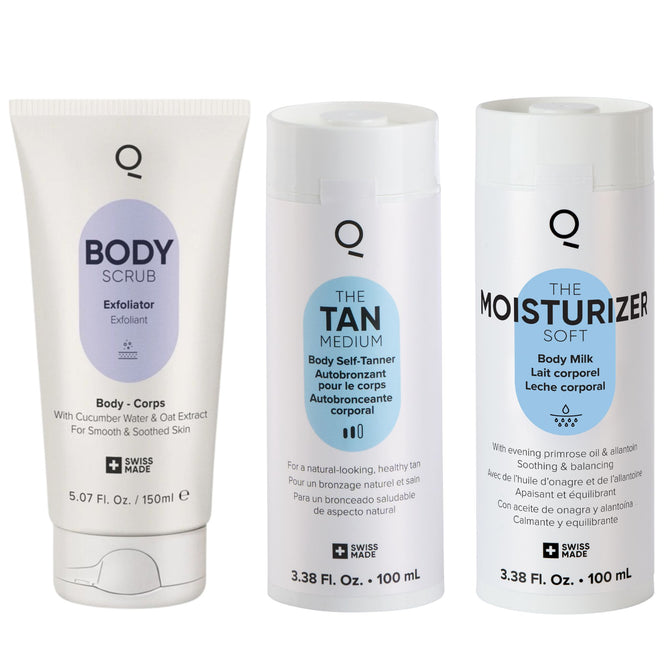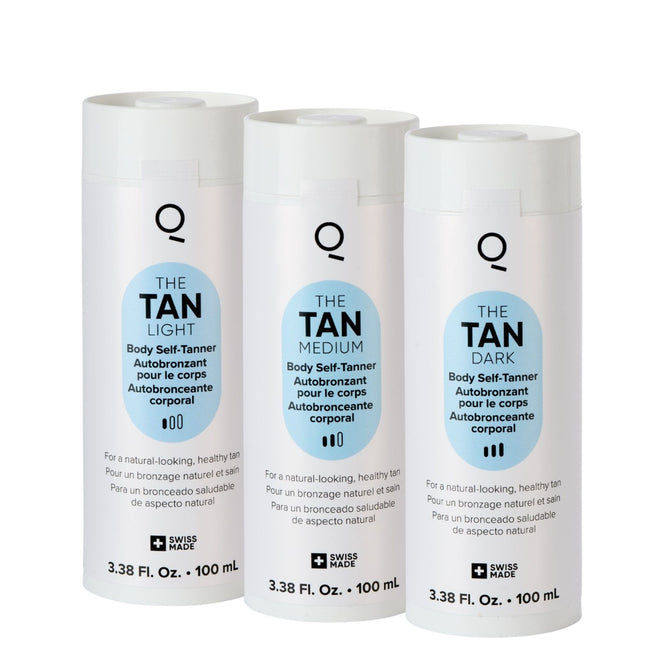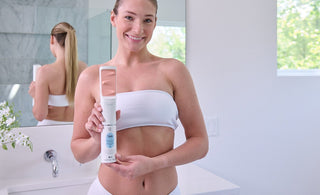
Red light tanning beds have become a trendy option in many salons, often marketed as a safer, skin-friendly alternative to traditional tanning. With claims of skin rejuvenation and gentle glow, they sound promising. But what exactly is red light tanning, and does it deliver the results people expect? Many wonder if red light therapy tanning beds are really effective or just an expensive, outdated fad. This article breaks down what red light tanning beds are, how they work, and why their benefits might not match their cost. We also explore why the IONIQ ONE Sprayer + TAN—the modern at-home self-tanning system—offers a more practical and superior way to achieve a natural, even tan without the hassle and risks associated with tanning beds.
The Basics of Red Light Tanning Explained
What Are Red Light Tanning Beds and How Do They Work?
Red light tanning beds are specialized tanning devices that use red wavelengths of light—typically around 630 to 660 nanometers—to illuminate the skin. Unlike traditional tanning beds that emit UV radiation to darken skin by increasing melanin, red light tanning beds focus on delivering red light therapy. This therapy aims to stimulate skin cells, promote collagen production, and support skin healing rather than producing a conventional tan.
The red light penetrates the skin's surface, interacting with cells to encourage repair and regeneration processes. However, it is important to note that red light itself does not stimulate melanin production. Therefore, the "tan" you get from a red light tanning bed is usually very subtle and not comparable to the bronzed results from UV tanning.
These beds are often promoted as a gentle way to improve skin texture and tone, making them appealing to people concerned about the damage caused by UV rays. Yet, they typically require multiple sessions to see any visible effects, and the color change is minimal.
Red Light Therapy vs. Traditional UV Tanning Beds: Key Differences
Traditional UV tanning beds work by emitting UVA and UVB rays, which directly stimulate melanin production in the skin, causing immediate darkening. This process, while effective in creating a tan, carries significant risks such as premature skin aging and increased risk of skin cancer.
Red light therapy tanning beds do not emit UV rays and instead rely on red light wavelengths that are thought to aid in skin health. The result is usually a gentle glow rather than a deep tan. This difference means red light tanning beds are not primarily tanning devices but more skin therapy tools.
Another important distinction is the speed and intensity of tanning. UV tanning beds offer quick results, often visible after a single session, while red light tanning requires consistent, long-term use and still provides only modest color changes.
This contrast is crucial for anyone deciding which method suits their tanning goals and skin health priorities.
Exploring Red Light Therapy in Tanning Beds
What Does Red Light Therapy Do for Your Skin?
Red light therapy, as used in tanning beds, is mainly associated with skin wellness rather than pigmentation. It is believed to:
-
Stimulate collagen and elastin, helping reduce wrinkles and fine lines
-
Improve skin texture and overall tone
-
Reduce inflammation and redness
-
Promote skin healing and rejuvenation
These benefits, while valuable for some, tend to develop slowly and require multiple treatments. Unlike tanning methods focused on color, red light therapy targets the skin’s cellular health, which might not fulfill the desire for a noticeable tan.
However, the results are subtle and not guaranteed. Scientific evidence supporting these claims varies, and red light therapy in tanning beds often lacks the intensity of professional medical devices designed specifically for skin treatment.
Can You Tan After Red Light Therapy? Myths and Facts
A common question is whether red light therapy tanning beds can produce a tan or help enhance tanning effects. Since red light does not stimulate melanin production, it does not cause a traditional tan.
Some users combine red light therapy sessions with UV tanning or sun exposure, hoping for improved results. While this may increase pigmentation, it also brings back the risks linked to UV exposure, such as skin damage and cancer.
It’s important to understand that red light therapy alone cannot replace UV tanning if the goal is a dark, even tan. The idea that red light therapy can produce a "red light tan" is mostly a misconception; what it actually provides is gentle skin improvement with very limited color change.
The Reality of Red Light Tanning Beds: Benefits and Limitations
What Red Light Tanning Beds Can and Cannot Do
Red light tanning beds offer certain skin benefits, especially for those looking to improve skin texture or soothe minor inflammation. They can help:
-
Enhance skin smoothness and appearance over time
-
Support skin repair and collagen production
-
Provide a mild, subtle glow in some cases
However, red light tanning beds cannot deliver the deep, rich tan many expect from traditional tanning methods. The color change is often faint and uneven, requiring multiple visits that may not justify the expense and time invested.
Additionally, the lack of UV rays means no stimulation of melanin production, which is essential for tanning. This limitation is a significant drawback for anyone wanting a noticeable, lasting tan without sun exposure.
Common Misconceptions About Red Light Therapy Tanning Beds
There are several misunderstandings about what red light therapy tanning beds can do:
-
They are often mistaken for a tanning method that replaces UV tanning, but red light does not produce a true tan.
-
Some believe red light therapy tanning beds are completely risk-free; however, overuse or improper use can cause skin irritation.
-
Many expect quick results, but red light therapy offers gradual, subtle changes that are not equivalent to a tan.
Recognizing these facts helps set realistic expectations and encourages exploring alternatives better suited for effective tanning.
Red Light Therapy and Tanning Bed Combination: Is Hybrid Tanning Worth It?
What Is Hybrid Tanning and How Does It Work?
Hybrid tanning combines red light therapy and UV tanning in one session or device. The goal is to merge the skin benefits of red light with the tanning effects of UV rays.
These beds use red light panels alongside traditional UV bulbs, allowing users to receive a skin treatment and tan simultaneously.
Comparing Red Light and UV Tanning in Hybrid Systems
While hybrid tanning might seem like a perfect solution, it carries the downsides of both methods:
-
The UV rays still pose risks of skin damage, aging, and cancer.
-
Red light therapy adds minimal benefit in the tanning context and does not mitigate UV harm.
-
Hybrid sessions tend to cost more and take longer without providing superior tanning results.
For people seeking an even, natural tan without UV exposure risks or complicated salon visits, the IONIQ ONE Sprayer + TAN offers a simpler, safer alternative that delivers fast, natural results at home.
The Cost Factor: How Much Does Red Light Therapy Cost at a Tanning Salon?
Pricing Comparison of Red Light Tanning vs. Other Tanning Methods
Red light therapy tanning sessions typically cost more than standard UV tanning or spray tanning services. Prices usually range from $30 to $60 per session, depending on the salon and location.
Because visible benefits from red light therapy are subtle and require multiple sessions, the overall cost can add up quickly.
When compared to at-home self-tanning options, this makes red light therapy tanning beds a costly choice with less predictable results.
Hidden Costs and Time Commitments to Consider
Besides the upfront price per session, red light tanning beds involve:
-
Frequent salon visits and scheduling hassles
-
Potential travel and time away from daily routines
-
Additional skincare products to manage skin dryness or sensitivity
-
Cumulative expenses that can exceed at-home tanning system investments
In contrast, the IONIQ ONE Sprayer + TAN, an at-home spray tan system offers a full-body tan in about three minutes, with mess-free, streak-free results that last for days—no salon appointments or extra products needed. Its cordless, lightweight design allows users to tan anytime, anywhere, cutting down on time and money spent. For those seeking a natural-looking, even tan without UV risks or salon visits, the IONIQ ONE Sprayer + TAN stands out as a convenient and advanced at-home solution.
Red Light Therapy Tanning Beds vs. Other Tanning Options
Salon Spray Tans and Self-Tanners: Pros and Cons Compared to Red Light Tanning
When deciding between tanning methods, it’s important to weigh the benefits and drawbacks of each. Salon spray tans and self-tanners are popular alternatives to red light tanning beds and come with their own set of advantages and challenges.
Pros of Salon Spray Tans and Self-Tanners:
-
Immediate visible results: Unlike red light therapy tanning beds, which often require multiple sessions for subtle skin improvement, spray tans deliver instant, noticeable color.
-
No light exposure: These methods avoid UV or red light exposure entirely, reducing risks related to skin damage.
Cons of Salon Spray Tans and Self-Tanners:
-
Application challenges: Uneven coverage, streaks, and orange undertones can occur, especially without professional application.
-
Temporary results: Spray tans and lotions typically last from a few days to a week and require frequent reapplication to maintain color.
-
Potential for staining: Clothing, bedding, and towels can be stained by some self-tanning formulas.
-
Chemical exposure: Some self-tanners contain ingredients that may irritate sensitive skin.
In contrast, red light tanning beds promise skin health benefits but fall short in delivering a noticeable tan quickly or conveniently. Their subtle skin glow often does not meet expectations for those seeking color. Moreover, repeated sessions add up in cost and time, reducing their overall appeal compared to spray tans or self-tanners.
Why Red Light Tanning Beds Are Becoming Outdated
Red light tanning beds are increasingly viewed as outdated due to their limitations and the rise of better alternatives. Several factors contribute to their decline in popularity:
-
Limited tanning results: The faint glow produced by red light therapy is no match for the bronzing effect of UV tanning or the instant color from spray tans.
-
Higher cost and time commitment: Multiple visits are required to see any effect, making them less convenient and more expensive over time.
-
Growing awareness of risks: Consumers are more informed about the dangers of tanning beds in general and are seeking safer methods.
-
Innovation in at-home tanning: The IONIQ ONE Sprayer + TAN delivers natural-looking tans quickly without salon visits or UV exposure, appealing to modern lifestyles.
As tanning technology evolves, red light tanning beds struggle to compete with solutions that offer better results, less hassle, and improved safety profiles.
Potential Risks and Downsides of Red Light Tanning Beds
Skin Irritation and Sensitivity Issues from Red Light Exposure
Although red light therapy is often promoted as gentle, it can cause skin irritation and sensitivity in some users, especially when sessions are too frequent or exposure is excessive. Common reactions include:
-
Redness and inflammation: Prolonged exposure to intense red light may trigger mild skin inflammation.
-
Dryness and peeling: Some individuals experience dryness or flaking after repeated treatments.
-
Increased photosensitivity: Red light can sensitize skin, potentially making it more vulnerable to UV damage from sun exposure.
People with pre-existing skin conditions like eczema or rosacea should exercise caution, as red light exposure might exacerbate symptoms. It’s essential to follow recommended session lengths and frequency to minimize irritation risks.
Long-Term Effects: What Science Says About Red Light Therapy Risks
Scientific research on the long-term safety of red light therapy is still emerging. While many studies support its skin healing benefits, comprehensive data on extended, repeated use in tanning bed formats is limited. Key points include:
-
Lack of DNA damage: Unlike UV rays, red light does not directly damage DNA or cause mutations associated with skin cancer.
-
Potential cellular stress: Excessive exposure may generate oxidative stress or affect cellular function, though evidence is inconclusive.
-
Need for further research: Long-term, large-scale studies are necessary to fully understand cumulative effects and any delayed risks.
Until more is known, users should approach red light tanning beds with moderation and rely on professional guidance.
Are There Any Safety Concerns with Frequent Use of Red Light Tanning Beds?
Frequent sessions in red light tanning beds may pose safety concerns including:
-
Eye damage risk: Without proper eye protection, intense red light can harm retinal cells, leading to vision issues.
-
Overheating and burns: Prolonged exposure may cause skin to overheat or burn, especially on sensitive areas.
-
Skin barrier disruption: Repeated exposure might impair the skin’s natural barrier, increasing susceptibility to irritants and infections.
Salon staff should enforce strict safety protocols, but individual users also need to be cautious about session duration and frequency to avoid adverse effects.
Why Red Light Tanning Beds Are Considered Expensive and Inefficient
Comparing Results: Are You Getting Value for Your Money?
One of the main criticisms of red light tanning beds is their cost versus results. Sessions can be costly—often higher than standard tanning or spray tanning—yet the visible outcomes are modest at best. Users seeking a glowing tan may find the subtle red light tan unsatisfying.
Since multiple sessions are necessary to notice any skin benefits or slight color change, the cumulative expense increases significantly. The investment rarely matches the return in terms of visible tanning, making it an inefficient option for many.
Time Investment vs. Visible Outcomes
Each session can take 15 to 30 minutes, with recommendations often suggesting several sessions per week over months to see effects. This can quickly become a significant time commitment.
Despite this, the red light tan effect remains faint and inconsistent for many users. The mismatch between the time spent and the tanning results is a major factor driving people away from red light tanning beds. The IONIQ ONE Sprayer + TAN delivers a full-body, natural tan in minutes with minimal ongoing effort—making it a far more efficient and effective choice.
Red Light Therapy Myths vs. Facts: What You Should Know Before Using Tanning Beds
Debunking Common Claims About Red Light Therapy and Skin Health
Many claims surrounding red light therapy tanning beds have become widespread but lack solid scientific backing. Common misconceptions include:
-
“Red light therapy instantly reverses aging.” In reality, collagen production and skin improvements from red light occur gradually over weeks or months.
-
“Red light therapy is a safe alternative that provides a tan without UV risks.” While safer than UV, red light does not produce a true tan, and any color changes are subtle.
-
“Red light therapy cures skin conditions like acne or eczema.” It may support skin healing but is not a medical treatment or cure.
Being aware of these myths helps users set realistic expectations and avoid disappointment.
Separating Marketing Hype from Real Benefits
Many tanning salons promote red light therapy with buzzwords and glowing promises. It’s important to recognize that:
-
Marketing often exaggerates benefits to attract customers.
-
Red light therapy beds provide mild skin improvements but are not miracle solutions.
-
They are best viewed as skin wellness tools rather than tanning devices.
Understanding this distinction helps consumers make informed decisions about their tanning and skincare routines.
How Red Light Therapy in Tanning Beds Compares to Other Skin Treatments
Red Light Therapy vs. Professional Skincare Treatments
Professional treatments such as chemical peels, laser resurfacing, or microneedling offer targeted, measurable results for specific skin concerns. These treatments often yield faster and more dramatic improvements.
Red light therapy tanning beds provide gentle, overall skin support but lack the precision and intensity of medical-grade procedures. They are better suited as complementary treatments rather than replacements.
Are Red Light Tanning Beds a Good Substitute for Medical-Grade Therapy?
Medical-grade red light therapy devices used by dermatologists operate at controlled intensities designed for healing, anti-aging, and treating skin disorders. Red light tanning beds are generally less powerful and not tailored for medical use.
Relying on tanning beds as a substitute may lead to underwhelming results and missed opportunities for effective clinical treatments. Anyone with significant skin concerns should consult a professional rather than depending solely on red light tanning beds.
This in-depth exploration reveals that while red light tanning beds offer certain skin benefits, they fall short in tanning effectiveness, carry potential risks, and often do not justify their cost or time. For those seeking a safe, convenient, and natural tan without salon visits or UV exposure, the IONIQ ONE Sprayer + TAN stands as a superior, modern alternative tailored to today’s needs.
Environmental Impact of Red Light Tanning Beds Compared to At-Home Solutions
Energy Consumption and Sustainability Concerns
Red light tanning beds consume a surprisingly high amount of electricity during each session. These machines operate with powerful lamps and require cooling systems to prevent overheating, leading to significant energy use. Over time, frequent sessions accumulate into a substantial environmental footprint. For tanning salons with multiple beds running daily, this energy demand becomes even more considerable. Moreover, the energy consumed contributes to greenhouse gas emissions, linking tanning bed use to broader environmental concerns about sustainability.
In addition to energy consumption, salons generate waste through disposable supplies such as towels, wipes, and cleaning agents. These products, often made from non-recyclable materials, add to landfill waste and environmental strain. As consumers become more environmentally conscious, this growing waste factor plays a role in decision-making around tanning options, pushing the market toward greener alternatives.
How IONIQ ONE Sprayer + TAN Offers a Greener Alternative
The IONIQ ONE Sprayer + TAN presents a more eco-friendly tanning choice. Its cordless, rechargeable sprayer requires only minimal energy per use, which is a fraction of what tanning beds consume. This efficiency reduces the carbon footprint associated with regular tanning sessions, making it a more sustainable option for eco-aware consumers. The compact design also eliminates the need for bulky, power-intensive equipment, allowing users to tan without the environmental costs linked to traditional tanning beds.
Beyond energy savings, the IONIQ formula itself is designed with environmental impact in mind. It is free from silicones, parabens, and sulfates—ingredients known to harm aquatic life and disrupt ecosystems when washed into waterways. Each cartridge supports multiple full-body applications, cutting down on packaging waste compared to disposable salon products. These aspects make IONIQ ONE Sprayer, an at-home spray tan machine a responsible choice for anyone looking to minimize their beauty routine’s environmental footprint.
Accessibility and Convenience: Red Light Tanning Beds vs. At-Home Tanning
Salon Availability and Scheduling Challenges
Access to red light tanning beds often depends on the availability of salons, which may be limited by geography, business hours, and capacity. Many users face scheduling difficulties, as salons can be busy or have restricted hours that do not align with personal routines. This makes consistent tanning sessions hard to maintain, particularly for those with demanding jobs or family commitments. The need to book appointments days or weeks in advance adds inconvenience and may deter regular use.
Travel time and costs further complicate the experience. Driving to and from a salon multiple times weekly can quickly become a hassle, reducing the overall appeal of red light tanning beds. This inconvenience contrasts sharply with the increasing demand for quick, flexible beauty routines that fit into busy lifestyles, motivating many users to seek alternatives that fit their schedules better.
How At-Home Tanning Empowers You with Flexibility
The IONIQ ONE Sprayer + TAN—the modern at-home tanning solution—offers unprecedented convenience and control. Users can tan whenever they choose—morning, night, or even while traveling—without being tied to salon hours or availability. This autonomy enables users to maintain a consistent tan on their own terms, avoiding the stress of scheduling conflicts.
The device’s cordless, lightweight design supports easy use in any location, whether at home or on the go. The full-body application takes just three minutes, making it effortless to fit into even the busiest days. This flexibility not only saves time but also encourages a regular tanning routine, which is essential for maintaining a natural, healthy-looking glow.
The Science Behind Magnetic Skin Technology vs. Red Light Therapy
How Magnetic Skin Technology Enhances Tan Quality
Magnetic Skin Technology, utilized by the IONIQ ONE Sprayer + TAN, is a breakthrough in self-tanning application. This technology creates a fine, wrap-around mist that clings uniformly to every contour of the body. Unlike traditional spray tans or lotions that can leave streaks or patchy areas, Magnetic Skin Technology ensures even coverage across hard-to-reach spots, resulting in a smooth, natural-looking tan.
This precise application is coupled with a skin-friendly, aloe-infused formula free of harsh chemicals, enhancing the overall experience. The even mist eliminates the need for rubbing or blending, reducing the risk of streaks and missed patches that are common frustrations with other tanning methods. As a result, users enjoy a flawless, radiant finish that develops within hours and lasts over a week.
Why This Innovation Outperforms Red Light Therapy in Tanning Results
Red light therapy tanning beds operate by exposing the skin to specific wavelengths of light intended to stimulate cellular processes, but they do not deposit pigment or deliver an immediate tan. The results are subtle and require repeated sessions to produce even minimal visible changes. By contrast, Magnetic Skin Technology physically applies a tan solution directly onto the skin, creating instant, noticeable color that develops fully within 6 to 8 hours.
This direct method allows users to see real, reliable tanning effects after just one application, eliminating the uncertainty and time investment required by red light therapy. Furthermore, the advanced formula in the IONIQ ONE Sprayer + TAN promotes hydration and skin nourishment, supporting both cosmetic and skin health benefits simultaneously.
Why Choose At-Home Tanning with IONIQ?
The IONIQ ONE Sprayer + TAN combines innovative design and technology to offer a superior tanning experience. Its cordless, lightweight sprayer provides 360-degree coverage, making it easy to reach every part of the body without awkward angles or missed spots. The self-cleaning feature simplifies maintenance, ensuring hygienic and hassle-free use over time.
The formula itself is formulated to be skin-friendly and vegan, free from silicones, parabens, and sulfates that can irritate or dry out the skin. This means users not only get a beautiful tan but also nourish and protect their skin with every application. The fast drying time and absence of staining on clothes or bedding further elevate the convenience factor.
Convenience, Control, and Safety: Benefits Over Salon and Red Light Tanning Beds
With the IONIQ ONE Sprayer + TAN, users control every aspect of their tanning process. Unlike salon tanning or red light therapy beds, there’s no need to work around salon hours or commit to multiple visits. You decide when, where, and how often to tan, enabling a consistent glow that fits your lifestyle.
Safety is another key advantage. The sprayer uses a formula that does not rely on UV or light exposure, eliminating risks associated with tanning beds such as burns, skin sensitivity, or eye damage. This makes IONIQ a safe, worry-free choice for achieving a natural tan, even for those with sensitive skin.
Real Results: What Users Say About At-Home Spray Tanning vs. Red Light Tanning Beds
Users consistently report high satisfaction with the IONIQ ONE Sprayer + TAN’s performance. Many praise its ease of use, rapid application time, and the natural, streak-free results it delivers. The tan develops evenly within hours, lasting up to nine days, which is a significant improvement over the subtle and temporary effects of red light therapy.
Beyond appearance, users appreciate the lightweight sprayer and skin-friendly formula, noting fewer skin irritations or unpleasant smells compared to traditional self-tanners. The portability also means they can maintain their tan while traveling, further extending the product’s appeal.
Common Frustrations with Red Light Therapy Tanning Beds
Feedback from red light therapy tanning bed users often centers on disappointment with results and the inconvenience involved. Many find the tanning effect too faint or inconsistent despite repeated sessions. The high cost per visit and the time required for multiple treatments are also frequent complaints.
Some users experience mild skin irritation or redness after exposure, which detracts from the overall experience. Scheduling appointments and traveling to salons add to the hassle, leading many to seek out more convenient and effective tanning solutions.
Conclusion: The Future of Tanning Is At Home with IONIQ
Summary of Why Red Light Tanning Beds Are Expensive, Ineffective, and Outdated
Red light tanning beds demand a substantial time and financial investment while delivering only modest tanning results. Their high energy consumption and safety concerns further detract from their value. The inconvenience of repeated salon visits and the subtle nature of red light-induced tans make these beds an increasingly outdated choice in today’s beauty landscape.
As tanning preferences shift toward safer, more efficient, and eco-conscious options, red light tanning beds struggle to keep up with modern consumer needs and expectations.
Take Control of Your Glow with IONIQ – Your Modern Tanning Solution
The IONIQ ONE Sprayer + TAN offers a revolutionary at-home tanning experience powered by Magnetic Skin Technology and a gentle, skin-friendly formula. With fast, even, and lasting results, it provides complete control over your tanning routine, free from salon constraints or exposure to harmful light.
Choosing IONIQ means embracing a smarter, more sustainable way to achieve a natural glow. It’s a modern solution that meets the demands of today’s busy, health-conscious consumers—making it the future of tanning.
References
- American Academy of Dermatology (AAD) – Red Light Therapy
https://www.aad.org/public/cosmetic/safety/red-light-therapy
- Skin Cancer Foundation – Tanning Beds
https://www.skincancer.org/blog/from-tanning-beds-to-skin-cancer/




